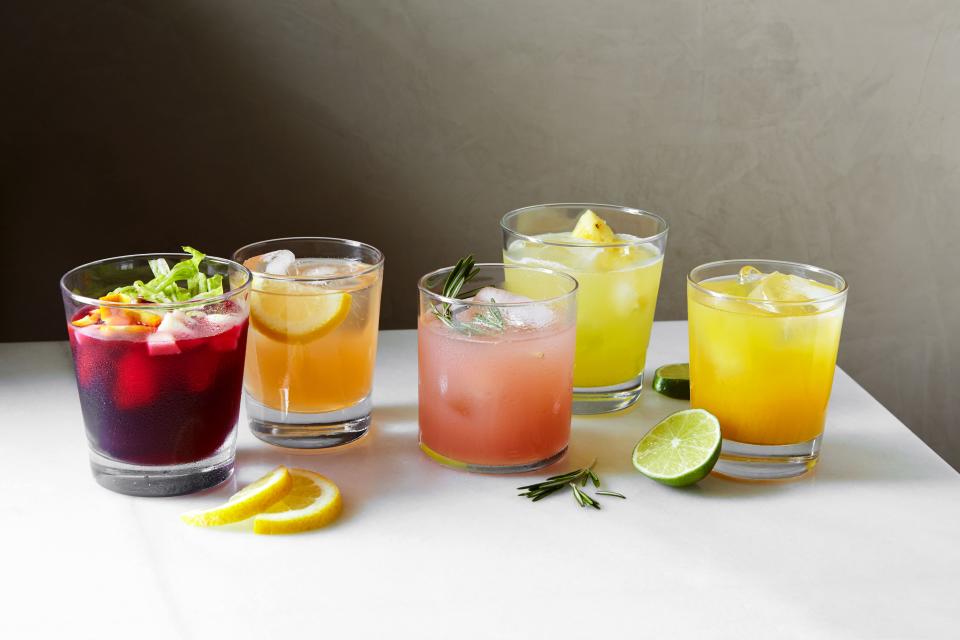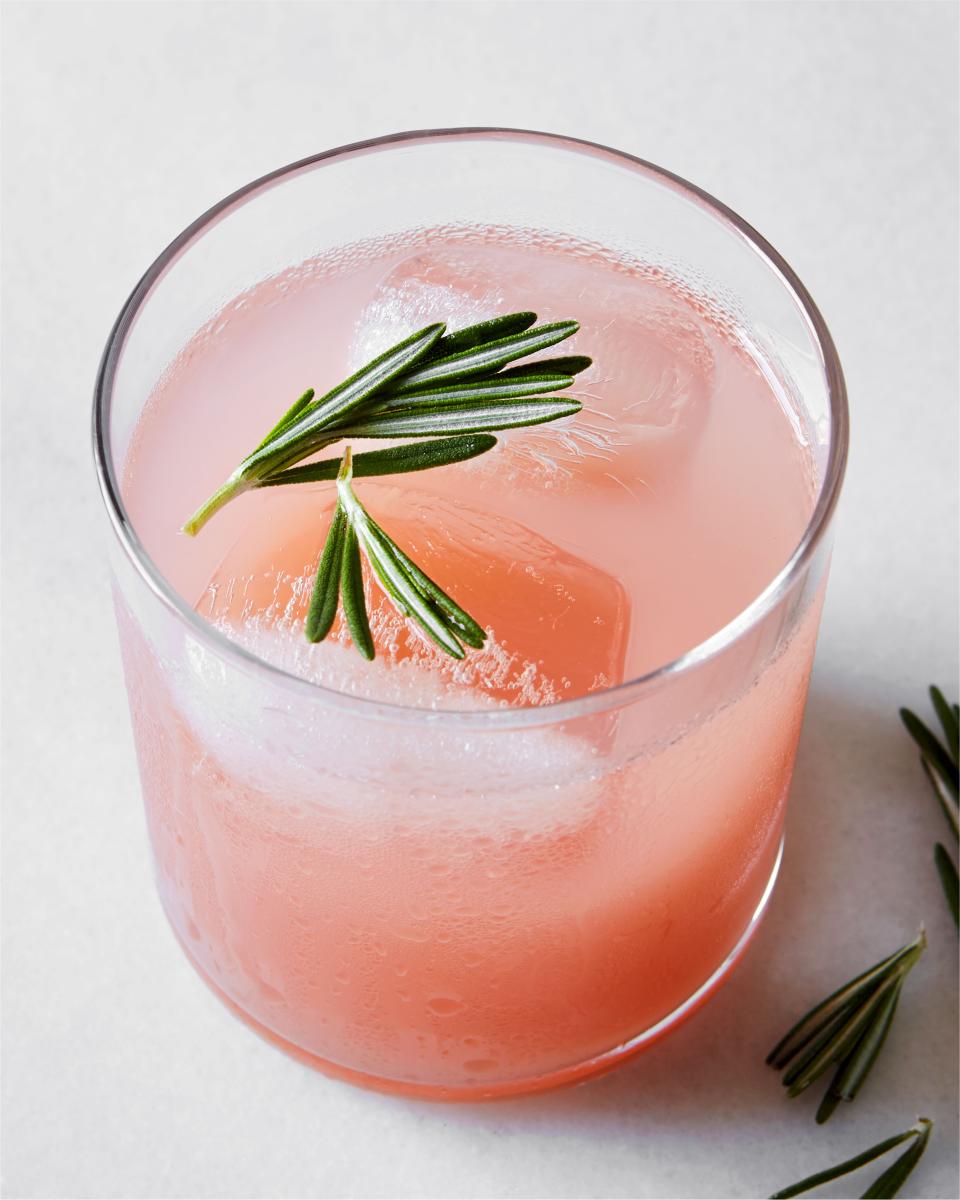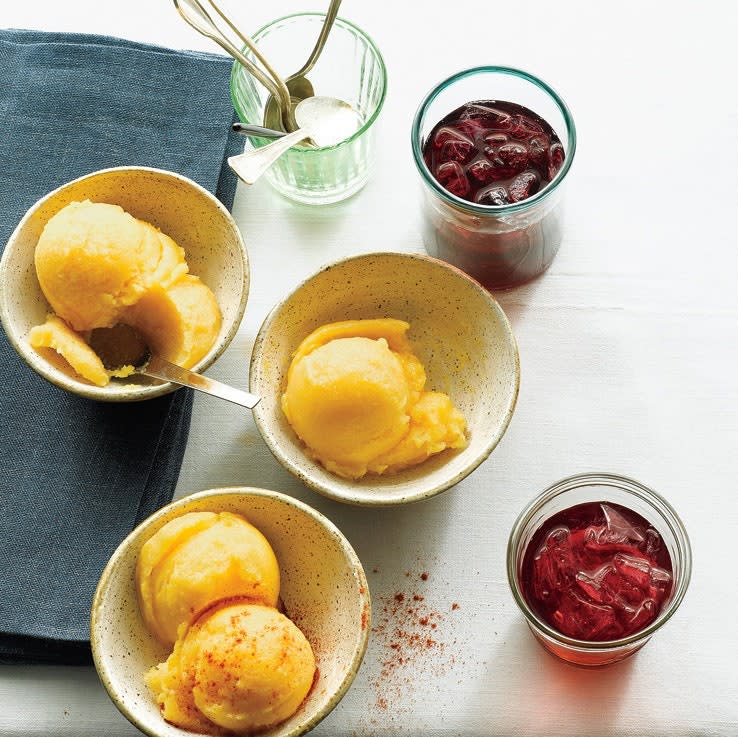How to Make Aguas Frescas, the Most Refreshing Drink You'll Sip All Summer
“I have always thought that aguas frescas were born out of resourcefulness,” Enrique Olvera writes in Tu Casa Mi Casa: Mexican Recipes for the Home Cook. “If you only have one melon to juice but there are ten people coming over for lunch, how do you make it yield more? By turning it into an agua fresca. It is a wonderful, fresh tradition shared by the entire country.”
These thirst-quenching Mexican drinks make magic out of three simple ingredients: a bit of fruit, puréed with a lot of water, lightly sweetened with sugar. “They’re the perfect drink for when you want something light and refreshing, but plain water or iced tea seems too light, and a fruit juice or smoothie seems too dense,” says Gonzalo Goût, co-author of Tu Casa Mi Casa.
In Mexico, aguas frescas are often enjoyed as part of a meal: “You wouldn’t want to drink orange juice with dinner, but an agua fresca complements dinner perfectly,” says Fany Gerson, author of Paletas: Authentic Recipes for Mexican Ice Pops, Shaved Ice & Aguas Frescas. Her favorites are the tart ones, like agua de tamarindo: drinks that help to cut through the richness of papas con rajas y crema ácida or enchiladas rojas.
You can think of agua fresca as “essentially a flavored water” says Goût, which should free you up to get creative. Even without a recipe, you can mix one together during any season, using whatever fruits (or vegetables) (or seeds) you have on hand. Here’s how.
Choose Your Base Ingredient(s)

Agua Fresca - HERO V1
Photo & Food Styling by Joseph De LeoStart with about two cups of chopped fruit, which will make four to eight servings depending on the size of your glasses. You can keep it super-streamlined: According to Eddie Hernandez, author of Turnip Greens & Tortillas, a simple watermelon agua fresca is hard to beat on a hot day. But, he says, if you’ve got some peaches that are starting to shrivel, you can absolutely go ahead and use them, too. If you have strawberries and mangoes hanging around, add those to the mix.
Agua de limón, which consists of lime, sugar, and water, is a classic combination—and it’s also a great base for other flavors. In Tu Casa Mi Casa, Olvera swaps the lime for lemon, and adds avocado which makes for a creamier drink. You can also include chia seeds—which add a sweet nuttiness and tapioca-like texture—to make this agua de limón con chia. Then, there’s my favorite agua fresca of all: tart, rosy agua de jamaica, made using hibiscus flowers.
Avocado and Lemon Water (Agua de Aguacate y Limón Amarillo)
Agua de Limón con Chía (Limeade With Chia Seeds)
Hibiscus Agua Fresca
Bon Appétit
Vegetables also make great additions. Stick to veggies that have naturally fruity vibes, like jícama or yuca (also known as cassava), or go more savory with cucumbers or celery. This lágrimas de la virgen agua fresca, which is traditionally prepared during Lent festivities, uses sweet, earthy beets as the base, paired with apples, bananas, and oranges.
Lágrimas de la Virgen (Beet Cooler With Fruits)
You can also make aguas frescas with grains, nuts, and other pantry staples—Mexican horchata, for example, is generally made with soaked rice. This cashew horchata starts with both brown rice and nuts. And I implore you to try Olvera's agua de cacao, a chocolatey mixture of cacao beans and coconut water.
Add Some Herbs and Spices

Guava Agua Fresca - IG
You don’t have to include herbs or spices to make a delicious agua fresca, but if you have any around, they’ll add more depth of flavor to the drink. “There are so many herbs that pair well with different kinds of fruit,” says Gerson. She recommends sticking with floral, citrusy herbs at first, warning that pungent options, like cilantro, can be overpowering when blended if you don’t use a light hand.
Think watermelon and mint, cantaloupe and basil, grapefruit and rosemary, or pineapple and ginger. “Anybody can make these at home, and you can really be creative with your flavor combinations,” says Hernandez. In some aguas frescas, spices play an essential role—for instance, horchata wouldn’t be horchata without the cinnamon.
Blend with Lots of Water (and a Little Sugar)
After you’ve chosen your base and any flavor additions, it’s time to purée everything in a blender with water, until the mixture becomes smooth. “You can generally start with a one-to-one fruit-to-water ratio if the fruit is sweet, like mango, pineapple, or watermelon," says Goût. “You’ll need much more water if the fruit is tart, like lime or green apple." (Some aguas frescas, like agua de jamaica and agua de cacao, infuse flavor through steeping—like tea—as opposed to mixing in a blender.)
Aguas frescas are traditionally much lighter and thinner than, say, a smoothie, but if you want a thicker drink, just use less water. In some cases, Gerson says, you can use two or three times (by volume) more water than the amount of fruit you’re using (so, 4 to 6 cups for 2 cups of fruit), but sometimes you don't need that much. “Remember, if you’re using fruit like watermelon, which already carries a lot of water, you won’t need to add as much water to the mixture,” Gerson says. After straining and tasting, if you want to make it lighter, you can always stir in a bit more water, or even add sparkling water if you want something bubbly.
One great thing about making aguas frescas at home is that you can control the sugar based on your own preference and the ripeness or tartness of your fruit. If you're using 2 cups of mangoes and 2 cups of water, for instance, start with 2 ½ tablespoons of sugar, and adjust by adding a little more, if needed. If you add the sugar before blending, it will incorporate more evenly, but feel free to add gradually, tasting and blending in a little more as you go. (If you want to add sugar after you’ve strained the mixture, it might make sense to use the bartender method of sweetening with simple syrup—that is, sugar dissolved in water—so that you don’t get a grainy drink.)
“Don’t sweat it too much, just have fun with it,” says Goût. “You can use less water or more water, less sugar or more sugar. The most important thing is that they are made fresh and served over ice." And that brings us to the final—and perhaps most important—step.
Strain and Serve Over Ice
Once the mixture is blended and smooth, use a fine mesh sieve to strain it into a pitcher. (Or not! Skip the straining if you prefer a pulpier drink.) You can serve it right away or keep it in your fridge for a few hours—but either way, you’ll definitely want to pour it over ice. After all, agua fresca literally means cool water.
Originally Appeared on Epicurious





